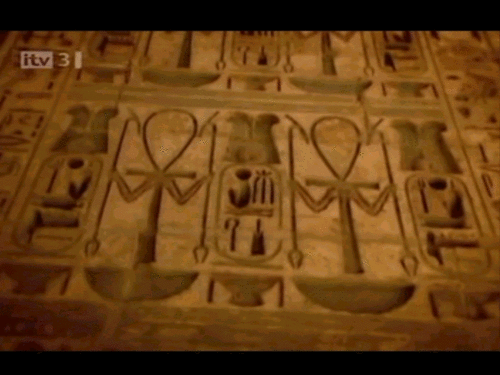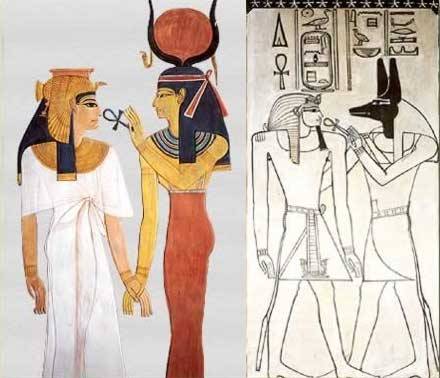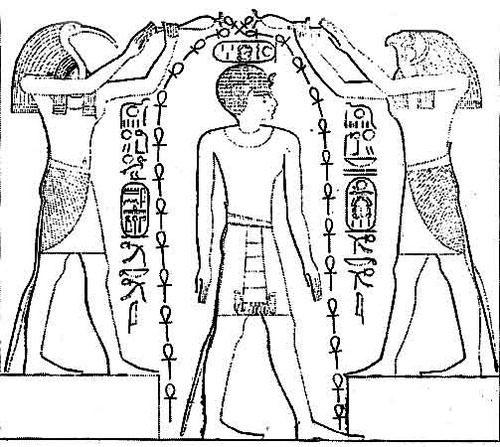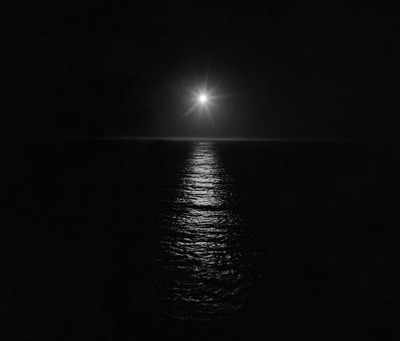
A lot of us wear it, never really knowing what it means, or perhaps we know a lil' bit about it, but nothing really in depth. We like it because it's pretty, it looks cool, it's "Afrikan", it's powerful, perhaps it resonates with you... Yet you never really thought to delve into it and see exactly what it means. The ankh is more than just a "feel good" symbol or something to appeal to a certain type of people (conscious folk). I am by no means an authority on the subject, but I have looked into the meaning. I am merely writing this to share what I know. To share what I have found. Some of this I advocate, some of it is just info I'm relaying (as with all my blogs). Enjoy.
The ankh is one of the best-known Kemetic symbols – it is found everywhere in sacred Kemetic artifacts and texts.

The ankh can be found in some form or another throughout many other ancient cultures (we'll talk about that later). The explanations and interpretations of the Ankh are many... Some less known than others. The meanings range from life, to sexual union, to fertility to regeneration...
I found this info, but I'm unsure of the source:
- The Egyptian symbol of life, the universe and immortality is the tau or looped cross called the ankh.
The first meaning of the Ankh I ever learned was that it means "eternal life". Some say the ankh represents the life-giving elements of air and water. Some say it is the key to the Nile.
The Ankh is strongly associated with Imhotep, who is the true Father of medicine. This is how it came to be used as the symbol for a multinational pharmaceutical manufacturer (TCG Lifesciences, I believe).
The NTRW of KMT are often depicted as carrying the ankh. They are often shown holding the ankh to someone's lips. This is them "offering the breath of life", or giving them immortality. We find Anqet, Ptah, Satet, Sobek, Tefnut, Ausar/Asaru/Wesir/Osiris, Ra, Aset, Hathor, Anpu/Inipu/Anubis and many other gods often holding the ankh sign, along with a sceptre, and in various tomb and temple reliefs, placing it in front of the king's or queen's face to symbolize the breath of eternal life. This is Nefertari receiving life from Auset and Amenhotep II receiving life from Anpu.

And other times, they would be pouring water, only the water would be ankhs. It symbolized the water in rituals of purification. Here, the king would stand between two gods, one of whom was usually Thoth, as they poured over him a stream of libations represented by ankhs. This could, also, be symbolize the regenerating power of water. Libation vessels which held the water used in religious ceremonies were, themselves, sometimes produced in the shape of the ankh hieroglyph.

Aset/Isis/Auset/Aset/Usat (the Goddess of 10,000 names) is often shown with the Ankh, as I mentioned before. In fact, there is a theory that connects the "knot of Isis" or the "tyet" to the Ankh. Can you see the similarity?
Then we have the interpretation that the ankh represents the male and female principle. It's taught that the circle at the top represents the female sexual organ, while the stump at the bottom the male organ and the crossed line, the children of the union. So, in this way, it represents sexual union, or fertility.
In Kemet, the word for mirror was the same as ankh. Perhaps showing the way death and life are the mirror one another.
One of the most powerful meanings that I have found--among ALL of these powerful meanings--is that the Ankh represents the womb, the fallopian tubes and the birth canal. Sistahs, this shows that you are divine and that your body is sacred. Cherish your womb, for it is the bringer of life. It is the gateway into this realm. The ankh is, indeed, the key of life... And we hold it.
There are many depictions and many meanings. Another meaning of the ankh is that it represents the Sun. It symbolic of the sunrise, with the loop representing the Sun rising above the horizon, which is represented by the crossbar. The vertical section below the crossbar would then be the path of the sun.
I hope you have enjoyed this and been enlightened. I end my blog with this:
This magic knot or cross, known as Nem Ankh, the key of life, was often used in the iconography of opposites. The loop over the tau-cross could stand for the Sun, for Heaven and Eath as the macrocsm and for man as the microcosm. It is generally interpreted as a symbol which expresses the reconciliation of opposites of the integration of active and passive qualities. This is amply confirmed by the fact that, when recumbent, the ankh symbolizes both male and female sexual attributes in precisely the same way as the very realistic Hindo depiction of a Hermaphrodite standing on a Lotus flower. Champdor gives a more traditional interpretation as:
the symbol of the millions of years of the life to come. The loop is the perfect symbol of what has neither beginning nor end and stands for the soul which is eternal because it has sprung from the spiritual essence of the gods. The cross erpresents the state of trance in which te neophyte struggled, or, more precisely, the state of death, the crucifixion of the chosen victim, and in some temples the priests used to lay the neophyte on a bed shaped like the cross... The possessor of the geometric key to the hidden mysteries, of which the symbol was this very looped cross, was able to open the gates of the Kingdom of the Dead and penetrate the hidden meaning of eternal life. Cham, p.22
Gods, kinks and Isis (almost invariably) are depicted holding the ankh to show that they command the powers of life and death and that they are immortal. The dead also carry it at the time their souls are weighed or when they are aboard the Boat of the Sun God, as a sign that they seek this same immortality from the gods. Furthermore the ankh symbolized the spring from which flowed divine virtues and the elixir of immortality. Therefore to hold the ankh was to drink from that well. It was sometimes held upside down by the loop - especially in funeral rites when it suggested the shape of a key and in reality was the key which opened the gateway of the tomb into the Fields of Aalu, the realm of eternity. Sometimes the ankh is placed on the forehead, between the eyes, and then it symbolizes the duty of the adept to keep secret the mystery into which he has been initiated - it is the key which locks these secrets away from the uninitiated. Blessed by the supreme vision, endowed with clairvoyance to pierce the veil of the beyond, he cannot attemot to reveal the mystery without losing it for ever.
The ankh is often set in the same category as the Girdle of Isis, as a symbol of eternity. This is not because its straight lines may be lengthened in the imagination to infinity, but because they converge upon and meet in a closed loop. This loop symbolizes the inexhaustible essence of the life force identified with isis, from whom life flows in all its forms. it is therefore carried by all those who wish to share her life. Hence the ankh may be identified with the Tree of Life, with its trunk and foliage.
The significance of the Girdle of Isis is far more complex. Like ropework or plaited hair round the arms and the loop of the cross, it infuses the concept of life and of immortality with the concept of the knots which tie down mortal life on Earth and which must be unravelled to enjoy immortality. `Free your bonds,' says The Egyptian Book of the Dead, `untie the knots of Nephthys.' And again: `Shining are those who carry the girdle. Oh! Bearers of the Girdle.' The same meaning is conveyed by the Tibetan Buddhist book called The Book of the Untying of the Knots. While the plain looped cross symbolizes divine immortality, sought orattained, the Girdle of Isis makes clear the conditions under which that immortality is obtained - by the untying of knots - dénouement in the true sense of the word.
A Dictionary of Symbols, Jean Chevalier and Alain Gheerbrant, translated from the French by John Buchan-Brown, Blackwell, 1994 (the French edition was originally published by Éditions Robert Laffront S.A. in 1969, 2nd ed. 1982).

Peace, Love and Ascension.
http://www.formspring.me/truizms or ancients.reborn@gmail.com
Hotep Goddess,
ReplyDeleteThank you for this blog. Some of the symbolism, pertaining to this ancient and powerful symbol, I had yet to hear. I've worn the Ankh since I was 13, given to me by my soon to transition grandfather, but didn't come into knowledge of it til years later.
Some interesting info I came upon just recently. The Ankh is the key to Kemetic use of electricity. It is a capacitor and oscillator and the sceptor you mentioned was used to ground energized shrines/altars. The form of the Ankh allows high voltages to be handled safely at high frequency. I ran this information by a couple electrical engineers and an electrophysicist and they all grudgingly agreed that it fell in line with their western education. Also it is no surprise that European electrical "discovery" began by the French 3 years after Napoleon invaded Egypt with 167 scientists...the things history books don't tell you...
Again thank you for this blog and sorry for such a long winded response...
Hotep
Khairi
I enjoy you, your knowledge and your response, King. Thank you.
ReplyDeleteIt is a key. As cross of Tuareg. A map is held on each one to enternal life if u can read it. To a place to receive an eternal soul. I think from the old old stories it is a family symbol of a very old clan from the Atlas. A people who had parasite worship. The eternal soul or breath of god was not easily found. It has no meaning to any outside this family and they bemoan it's theft and usage by cultural appropiators.
ReplyDeleteIt is a key. As cross of Tuareg. A map is held on each one to enternal life if u can read it. To a place to receive an eternal soul. I think from the old old stories it is a family symbol of a very old clan from the Atlas. A people who had parasite worship. The eternal soul or breath of god was not easily found. It has no meaning to any outside this family and they bemoan it's theft and usage by cultural appropiators.
ReplyDelete